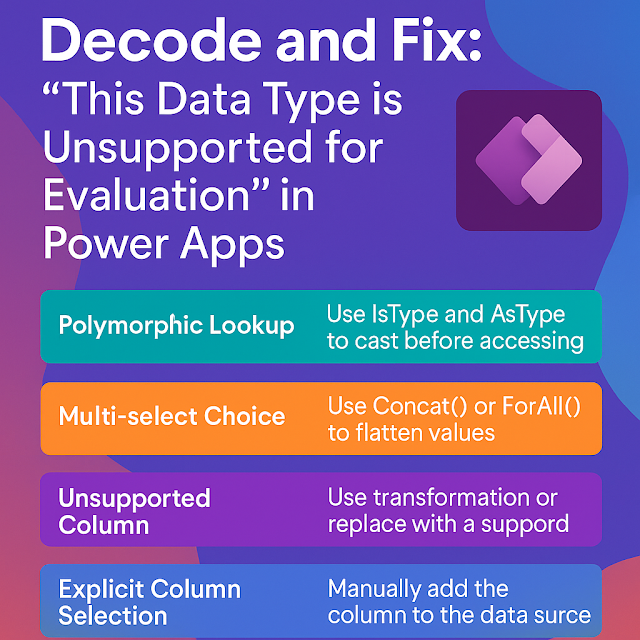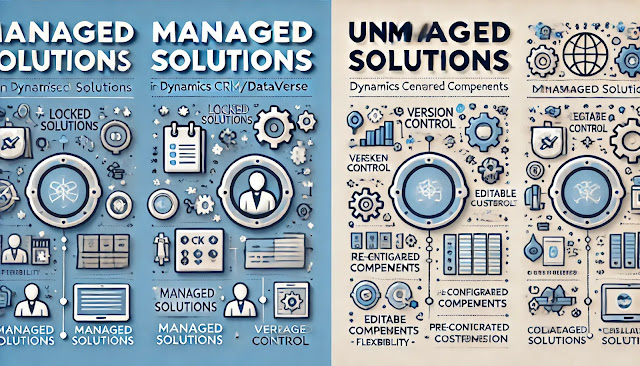Dynamics 365 Field Service : Embed apps in Field Service
In today’s fast-paced field service environments, technicians and back-office staff need highly tailored tools to perform their work efficiently. Dynamics 365 Field Service provides a robust foundation, but what if you could extend it even further with task-specific apps and custom pages—right inside your Field Service experience?
This blog dives deep into how you can embed Canvas Apps and Custom Pages in Dynamics 365 Field Service to create next-level, user-centric solutions. Whether you’re a developer or an architect, you’ll find step-by-step guidance, technical insights, and best practices to make it happen.
Why Embed Apps in Field Service?
Field technicians often face challenges:
- Too much data: Standard forms show unnecessary fields.
- Limited UI flexibility: Model-driven apps aren’t always mobile-optimized.
- Offline work: Poor connectivity in the field requires offline capabilities.
- External integrations: Need for IoT data, barcode scanning, or 3rd-party systems.
By embedding Canvas Apps or Custom Pages, you can address these pain points and provide focused, user-friendly experiences.
Real-World Use Cases
Parts Return App
- Enable technicians to initiate parts returns from their mobile devices, syncing with inventory systems.
IoT Diagnostics Page
- Embed real-time IoT data directly in the Work Order form for HVAC or manufacturing equipment.
Timesheet Capture App
- Simplify timesheet entry with a lightweight Canvas App designed for mobile users.
How to Embed a Canvas App in Field Service
Step 1️⃣: Build the Canvas App
1. Open Power Apps Studio → Create a Canvas App (Phone Layout).
2. Connect to Dataverse tables like Work Order, Customer Asset, etc.
3. Design the app: Add galleries for Work Orders, forms for data entry, buttons for actions.
4. Use Power Fx for business logic (e.g., Patch, Filter, Lookup).
5. Save and publish your app.
Step 2️⃣: Embed in Field Service
1. Go to your Field Service Model-Driven App → Edit form.
2. Add a new Section or Tab where the app should appear.
3. Insert a Canvas App Control in the form.
4. Set the app ID and parameters (pass Work Order ID, for example).
5. Save, publish, and test in Field Service Mobile.
How to Use Custom Pages in Field Service
Custom Pages combine the best of Canvas Apps and Model-Driven Apps:
- Go to Power Apps → In your solution → Add Page → Custom Page.
- Design using Canvas-like controls.
- Add it to your model-driven app navigation.
- Pass contextual data (like Work Order ID) automatically.
This keeps your UI consistent with the rest of Field Service while allowing greater flexibility.
Developer View
- Use PCF Controls (PowerApps Component Framework) for advanced UI elements like barcode scanners or signature pads.
- Build REST API calls in the Canvas App for external data (if not available in Dataverse).
- Implement offline caching for large datasets using Collections + SaveData/LoadData.
Architect View
- Align embedded apps with Application Lifecycle Management (ALM) processes using Solutions and Source Control (Git).
- Use Managed Properties to control customization in customer environments.
- Consider performance: Large datasets should use delegable queries for Canvas Apps.
Benefits of Embedded Apps
- Task-focused UI – Only show what’s relevant for the technician.
- Enhanced Productivity – Faster data entry and reduced errors.
- Offline Capability – Technicians can work even without network access.
- Third-party Integration – Extend Field Service with IoT, ERP, or custom APIs.
Limitations to Keep in Mind
- Canvas Apps need careful tuning for large datasets (delegation limits).
- Custom Pages don’t yet support full offline mode like Canvas Apps.
- Complex security (Field-Level Security) must be manually configured for Canvas Apps.
Best Practices
- Design mobile-first (especially for technicians).
- Use role-based access control to show/hide embedded apps.
- Optimize Canvas Apps for performance with Monitor and App Checker.
- Document parameters passed between Field Service and embedded apps.
Conclusion:
Embedding task-specific Canvas Apps and Custom Pages in Dynamics 365 Field Service is a game-changer. You can deliver highly tailored experiences that drive productivity, simplify workflows, and ensure technicians always have the right tools at their fingertips.












Comments
Post a Comment